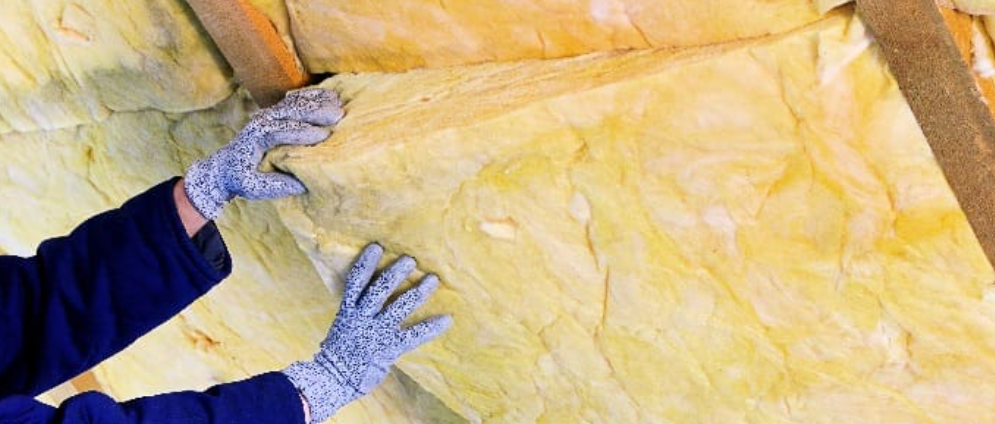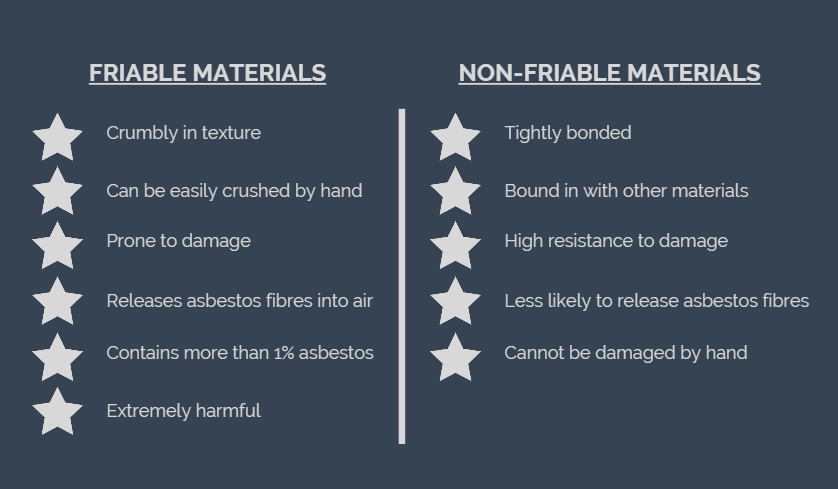
Asbestos Containing Materials (ACMs) vary in how easily they are broken up and how readily they release asbestos fibres into the air. Friability is the tendency for ACMs to break down. The more friable a material is, the more likely it will release fibres when disturbed, and the greater the risk of exposure.
Certain ACMs such as sprayed coatings on steelwork have a high tendency to release asbestos fibres and are more friable in their nature. Other ACMs have an ability to retain most fibres and are non-friable, eg. if they are bound into a bonding material or matrix such as cement, bitumen, resins, rubber etc.
So what is ‘friable’ asbestos?
ACMs that are more likely to be damaged, and release asbestos fibres as a result, are known as ‘friable’. These materials can easily be reduced to powder or crumbled by touch, making them incredibly fragile. Friable asbestos contains more than 1% asbestos by weight. Asbestos material that has been sawed, scraped, or sanded into a powder, is more likely to create a health hazard, as small asbestos particles are easily made airborne and inhaled.
And ‘non-friable’ asbestos?
Non-friable asbestos is asbestos that is more resistant to damage and abrasion, so is less likely to release harmful fibres into the air. It cannot easily be crumbled or reduced to a powder. Non-friable asbestos cannot be damaged by the human hand. It cannot be easily disturbed. Non-friable materials do not usually easily emit asbestos fibres.
Interestingly, non-friable asbestos may become friable as a result of work overtime, due to degradation or chemical exposure, or through damage.

Examples of Friable Asbestos
Thermal insulation, insulation boards, pipe lagging, and sprayed coatings.
Examples of Non-Friable Asbestos?
Vinyl floor tiles, cement sheets, bitumen products and textured decorated coatings (such as Artex). Non-friable asbestos materials cannot be damaged by the human hand and so pose less risks to health. The danger comes if you are to actively disturb the asbestos from drilling, cutting, sanding, or disturbing non-friable ACMs.
What to do if I find asbestos?
If you think there may be asbestos in your home, do not panic. ACMs that are not damaged or disturbed are not likely to pose a health risk. The method used for dealing with asbestos in the home depends upon where the asbestos is found and the condition of the material.
If the ACM is in good condition the best thing is to leave it alone and monitor it for signs of deterioration and damage in the future.
If the ACM is friable, has been disturbed or damaged, asbestos removal may be considered. Air samples should be taken after the work is completed.
It is incredibly important to employ a professional who will be able to advise you of the safest next steps. Asbestos removal especially, poses a high risk of fibre release if not done properly. Get in contact with the Vintec team – call 01923 661144 and one of our experts will be able to advise you on the best next steps.
